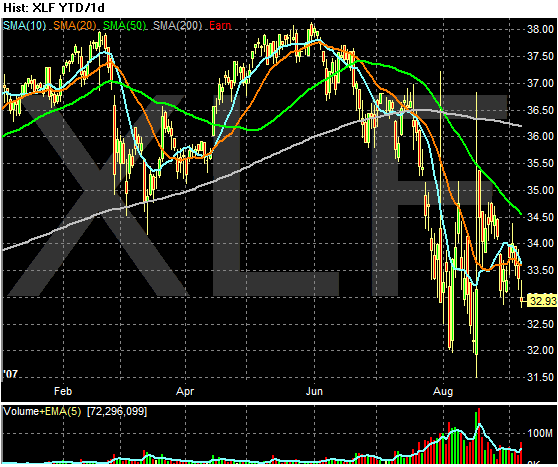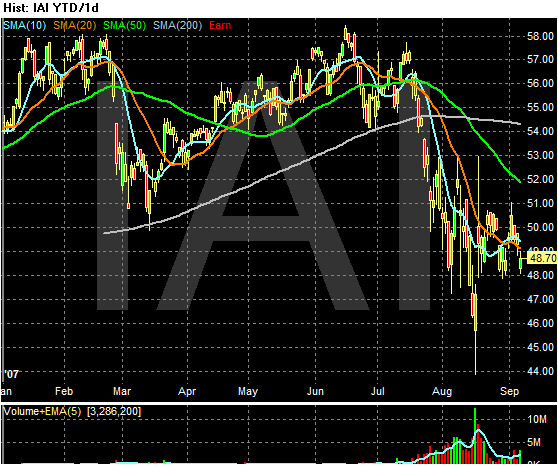Wall Street is getting no benefit from the biggest bond market rally in five years.
Lehman Brothers Holdings Inc. faces higher borrowing costs today than it did in June, even after the steepest quarterly drop in U.S. Treasury yields since 2002 pushed interest rates down for everyone from Procter & Gamble Co. to AT&T Inc. Investors are so leery of Bear Stearns Cos. that its 10-year bonds trade at a discount to Colombia, the South American nation that's barely investment grade. Goldman Sachs Group Inc. is being punished with a higher yield than Caterpillar Inc., the heavy-equipment maker.
Bond buyers view the nation's largest securities firms as no safer than taking a flier on subprime mortgages. That's a nightmare scenario for the industry's chief executive officers, who relied on cheap financing for leveraged buyouts, real estate lending and proprietary trading to produce record profits -- and paychecks of $40 million or more for themselves.
From the WSJ:
It is crunch time for many of the world's biggest banks grappling with one of the tightest credit markets of recent memory.
About $120 billion of commercial paper outside the U.S. is due for renewal in the next week, including $56.5 billion of asset-backed paper, which has met the stiffest resistance from investors. Issuers need to find buyers in order to roll over these short-term funding mechanisms or pay off the loans. So banks and other issuers are pulling out all stops to lure investors back. In the meantime, they are using short-term moves to raise cash to keep them going.
While there is little sign the market is opening up, a few rays of hope are emerging. In Australia, the central bank has broadened the definition of assets it would accept as collateral for short-term funding it supplies to domestic banks. In the U.S., money-market funds haven't suffered big redemptions and thus still have money to put to work. Investors in these funds also are willing to hold commercial paper for slightly longer time frames, suggesting some stability may be returning, though the funds may find their investors want a limited diet of short-term paper.
Remember that financial shares represent about 20% of the S%P 500. That means their performance could have a very strong impact on the index's overall performance. Here's a chart of the XLF -- the ETF that tracks the financial sector. Notice it is performing very poorly. While the ETF has found support around the $48/area, it hasn't been able to move above $50. Also note the 20 and 50 simple moving averages are trending lower and the ETF is trading about 10% below the 200 day SMA. In other words, this sector is really hurting. News like the two pieces above either add downward pressure or make an upward move extremely difficult, which further hurts the overall index.

Here's a chart of the IAK's -- the ETF that tracks the brokerage industry. Notice that it shares the exact same technical problems as the XLF. More importantly, notice it was very thinly traded until the recent market turmoil when the volume increased in a big way. That's not a positive development.
